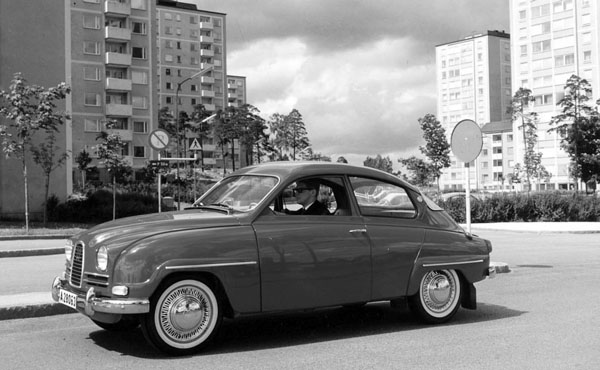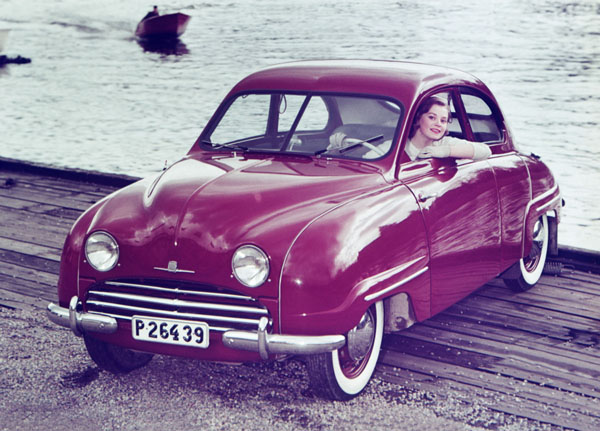
The Saab 96 was introduced in 1960 but initially used the three-cylinder two-stroke engine from the model 93 which sold well in the late 1950s. The engine was inclined at an angle of 30 degrees to the left and positioned ahead of the front axle. The block and upper half of the crankcase were cast as an integral unit with the bottom half similarly of cast iron. The cylinder head, pistons and induction manifold were of light alloy. Right from its introduction Saab hoped to develop the two-stroke design even further by either refining the existing three-cylinder version or developing a new variant as a two-stroke V4 engine and tested various four-stroke units to assess their performance in relation to two-strokes.
As sales began to dip management finally accepted the reality that two-stroke engines had seen their day but lack of time and money prevented them from designing a new engine and getting it tested in time to stave off market losses. After testing a variety of English and Italian engines and finding that none met their requirements, they finally settled in 1964 on a German-built Ford engine. This was introduced in mid-1966. Developing 48 kW the 1498cc engine was equipped with a Solex downdraught carburettor and automatic choke.
Externally, the new 96 largely resembled the 93 from the front to the near side windows – which were larger. However, the rear end was completely new. In addition to its much-updated lines the car was also much more comfortable, due to the use of a wider rear seat and increased headroom provided for the rear seat passengers. This car was now a true five-seater. An improved instrument panel layout featured a horizontal speedometer with four round modern looking gauges underneath and the top and front edge of the panel were provided with safety padding.
With exports continuing many variants were produced to meet local market conditions. Extra intakes on the bonnet sides were provided on cars exported to hot countries and the rear side windows were of the opening type.
Cars sold in mountainous countries such as Austria were fitted with the four-speed gearbox from the 95 as standard.
The 96 was produced for almost 20 years and each year some changes were made to the car design, from insignificant items such as moving the Saab badge from the bonnet to the grille to the introduction of disc brakes on the front wheels.
Production of the 96 finally ceased in January 1980, 30 years after the 92 appeared on the scene. Although they had undergone many changes, the common origins of the various aerofoil-shaped models were easy to discern.









